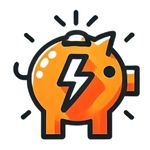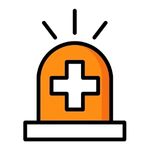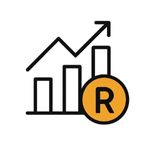
Living paycheque to paycheque is a daily reality for many South Africans. It means depending fully on your next salary to cover basic needs, with little or nothing left once bills are paid. Rent, groceries, electricity, transport, school fees, and debt repayments often take up the entire income. This cycle affects people across various income levels, including those in formal jobs. Rising living costs, slow wage growth, and easy access to credit make it difficult to save or prepare for emergencies.
Key Takeaways
- Widespread Financial Strain: Living paycheque to paycheque affects South Africans in both low and middle-income brackets. Rising living costs and limited wage growth leave many without enough to save or cover emergencies.
- Heavy Reliance on Credit: Many people depend on credit cards or loans before the end of the month. This reliance creates a cycle of debt and financial stress, especially when no emergency fund is in place.
- Practical Steps Can Help: Budgeting, debt repayment, and building a small savings buffer can ease financial pressure. Even small changes in spending habits can lead to greater financial stability over time.
About Arcadia Finance
Secure your loan effortlessly with Arcadia Finance. Enjoy no application fees and select from 19 reputable lenders, each fully compliant with South Africa’s National Credit Regulator standards. Benefit from a streamlined process and trustworthy options tailored to your financial needs.
What Is Paycheck to Paycheck?
Living paycheque to paycheque refers to a financial situation where someone cannot cover their monthly expenses without relying entirely on their next salary. If they lose their job or face a delay in payment, they may be unable to meet essential obligations like rent, groceries, or transport.
People in this situation typically use most, if not all, of their income on necessary costs, with little to no money left for savings. There is often no buffer to handle unexpected events.
This phrase is also used to describe individuals who have minimal or no savings and who face greater financial pressure if they become unemployed or encounter a sudden expense, such as a car repair or medical bill.
Ever wondered how your rent, groceries and transport stack up against national averages? Check out What is the Cost of Living in South Africa? for a detailed breakdown of everyday expenses so you can stop guessing and start planning.

Who Is Living This Way
The term “paycheque to paycheque” is sometimes linked to the working poor, but this comparison is not always accurate. The working poor are defined as individuals whose income is below the official poverty line despite being employed.
Living paycheque to paycheque can affect a wider group of people, including those earning slightly above the poverty threshold and even those in the middle or higher income brackets. It is not limited to low-income earners.
There is a common belief that people in this situation lack qualifications or earn low wages, but that is not always the case. Many have university degrees or advanced qualifications in specialised areas.
Factors such as a struggling job market, limited opportunities in certain sectors, or working in industries affected by economic shifts can all contribute to someone ending up in this situation, even with good credentials.
By exploring the cost of living in South Africa you’ll see how rent, transport and food bills can devour your wages.
When You Need More Than One Job
People living paycheque to paycheque often take on extra work to make ends meet. Holding more than one job becomes necessary to cover everyday living costs such as rent, school fees, food, and utilities.
This does not only apply to those on low incomes. Even individuals in well-paid roles, including those considered upper-middle class, may find themselves in this position if their spending equals or exceeds their earnings. Financial pressure is not always linked to how much someone earns, but rather to how much they are required to spend to maintain their lifestyle or meet obligations.

Common Causes of Living Paycheque to Paycheque
Living paycheque to paycheque is a widespread issue in South Africa, affecting individuals across various income levels. Several factors contribute to this financial strain:

Stagnant Wages Amid Rising Living Costs
Many South Africans experience minimal wage growth, which fails to keep pace with the increasing cost of living. Expenses such as food, housing, and transportation have escalated, making it challenging for individuals to cover basic needs without exhausting their entire income.

High Unemployment and Underemployment
South Africa faces a high unemployment rate, standing at 32.1% as of the third quarter of 2024. This situation leads to increased financial pressure on employed individuals who often support unemployed family members, further stretching their limited resources.

Elevated Levels of Consumer Debt
Easy access to credit has led many South Africans into significant debt. Credit cards, personal loans, and store accounts are commonly used to bridge financial gaps, resulting in high monthly repayments that consume a substantial portion of income.

Lack of Emergency Savings
A significant number of South Africans lack emergency savings, leaving them vulnerable to unexpected expenses such as medical emergencies or urgent home repairs. Without a financial cushion, individuals often resort to high-interest loans, exacerbating their financial difficulties.

Cultural Financial Obligations
In many South African communities, employed individuals are expected to provide financial support to extended family members, a practice often referred to as “black tax.” While rooted in cultural values of communal support, this obligation can place additional financial strain on earners, limiting their ability to save or invest.

Economic Inequality
South Africa is characterized by significant economic disparities, with a large portion of the population living in poverty. This inequality limits access to quality education and employment opportunities, perpetuating a cycle of financial instability for many households.

Energy Crisis and Load Shedding
Frequent power outages, known as load shedding, disrupt daily life and economic activities. These interruptions can lead to additional costs, such as purchasing alternative power sources or repairing damaged appliances, further straining household budgets.
Our guide to frugal living shares clever hacks for saving on groceries, utilities and fun without feeling deprived.
Signs You’re Living Paycheque to Paycheque
Living paycheque to paycheque means your income barely covers your expenses, leaving little to no room for savings or unexpected costs. Recognising the signs can help you take steps toward financial stability.
- Inability to Handle Unexpected Costs: If an unforeseen expense like a medical bill or car repair would derail your finances, it’s a clear indicator. Without an emergency fund, even minor surprises can lead to debt or missed payments.
- Reliance on Credit Before Month-End: Using credit cards or loans to cover essentials before your next payday suggests your income isn’t sufficient for your needs. This reliance can lead to accumulating debt and interest, making it harder to break the cycle.
- Zero Balance by the Next Pay Day: Consistently having little to no money left before your next paycheque indicates a lack of financial cushion. This pattern leaves you vulnerable to emergencies and prevents you from building savings.
- Living in Constant Financial Stress: Persistent worry about bills and expenses can affect your mental health. If you’re frequently anxious about money, it’s a sign that your financial situation needs attention.
Recognising these signs is the first step toward improving your financial health. Creating a budget, reducing unnecessary expenses, and building an emergency fund can help you move away from living paycheque to paycheque.

How You Can Stop Living Paycheque to Paycheque

Create A Budget
Budgeting is the first step towards better financial control. Begin by listing all sources of income and tracking every expense to get an accurate view of where your money goes each month. Once you know your spending habits, you can create a realistic budget that ensures your basic needs and savings are covered before you use money for non-essential purchases.
Sticking to a budget helps you take charge of your money because it gives you a clear plan for every rand you earn.

Tackle Your Debts
Debt repayments can make it harder to build up savings or plan for the future. To change this, it is a good idea to deal with your debts directly. There are two common strategies that may help: the snowball method focuses on paying off your smallest debts first to gain momentum, while the avalanche method targets the debts with the highest interest rates to save more over time.
Reducing your debt frees up money that can be redirected towards saving or investing.

Build An Emergency Fund
Unexpected costs can quickly derail your finances if you are unprepared. An emergency fund acts as a financial safety net to cover urgent expenses like medical bills, car repairs, or job loss. A useful goal is to have enough saved to cover between three and six months of essential expenses.
Start by putting aside a small portion of your income every month, even if it’s a modest amount at first. Over time, these small contributions can grow into a helpful buffer.

Start Investing Early
The sooner you begin investing, the more time your money has to grow. Even small, regular contributions to investments can make a big difference over the long term. Compound interest means that the earlier you start, the better your returns may be.
Take time to look into different investment choices and speak with a licensed financial adviser if needed to help you make suitable decisions based on your goals.

Prioritise Your Spending
When money is limited, knowing what matters most in your budget is essential. This starts with understanding the difference between needs and wants. A need includes basic living requirements such as shelter, food, transport, and school fees. A want refers to optional extras, such as restaurant meals or entertainment.
Review your spending habits by going through your bank statements and sorting transactions into needs and wants. This helps identify where changes can be made. Setting the right priorities ensures your money goes towards necessities before anything else, which also prevents spending on things you cannot afford.
Conclusion
Living paycheque to paycheque is a common but stressful financial reality for many South Africans, regardless of income level. It often results from a mix of rising living expenses, limited wage growth, high debt levels, and a lack of savings. While the situation can feel overwhelming, it is possible to improve your financial standing by taking practical steps such as budgeting, reducing debt, and setting aside even small amounts for emergencies. Understanding the causes and warning signs is the first step towards regaining control of your finances and building a more secure future.
Frequently Asked Questions
Living paycheque to paycheque means that you depend entirely on your next salary to meet your basic monthly expenses, such as rent, groceries, transport, and bills. You typically have little or no money left over once those are paid, which means you’re not able to save or prepare for emergencies.
Yes, even people with regular or well-paying jobs can find themselves in this situation. This often happens when their expenses are high, they have large financial commitments, or they support extended family members. Having a good income does not always mean financial security if spending is not managed carefully.
There are a few warning signs. If you regularly run out of money before your next payday, need to use credit cards or loans to get through the month, or would struggle to pay for an unexpected cost like a car repair, these are strong indicators that you’re living paycheque to paycheque.
A good place to start is by creating a budget. This involves tracking all your income and spending to get a clearer picture of where your money goes each month. From there, you can begin cutting back on non-essential costs and planning how to save more regularly, even in small amounts.
Ideally, an emergency fund should cover at least three to six months’ worth of essential living expenses. If that’s not possible right away, begin by saving small amounts each month. Over time, these savings can build up and provide a safety net when you need it most.
Fast, uncomplicated, and trustworthy loan comparisons
At Arcadia Finance, you can compare loan offers from multiple lenders with no obligation and free of charge. Get a clear overview of your options and choose the best deal for you.
Fill out our form today to easily compare interest rates from 19 banks and find the right loan for you.




